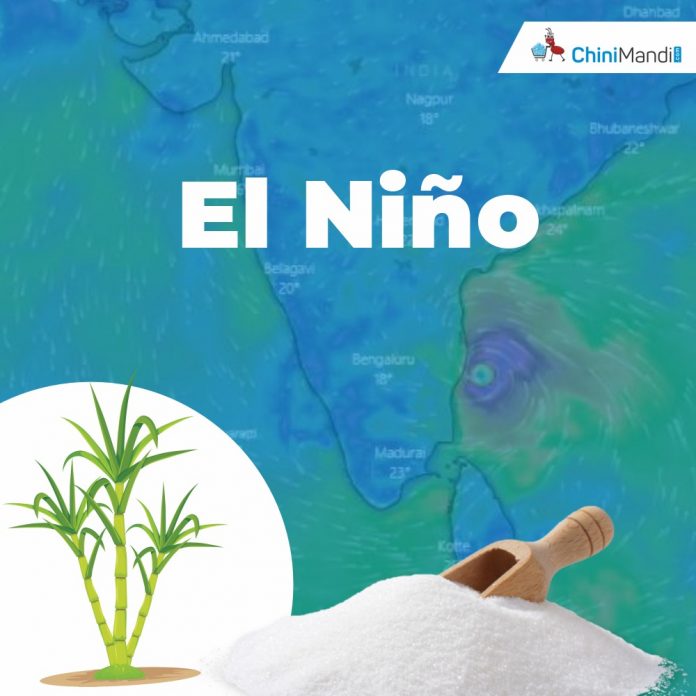The current sugar season of 2023-24 began on a cautious note amid a fall in sugarcane production in key States of Maharashtra and Karnataka. In contrast to the previous sugar seasons, wherein the country supplied sugar in large quantities to importing nations, and made sufficient provisions for sugar conversion to produce ethanol for blending, the current season has been a damp squib. The Government has restricted exports and capped domestic sugar conversion for ethanol production to 17 lakh tons. The policy interventions were taken to maintain sufficient domestic sugar stocks to meet annual consumption demand and to keep prices under check.
During the 2023 SouthWest monsoon, the northern part of the country was battered by rainfall causing much damage to life and property. In contrast, several States including Maharashtra and Karnataka registered sporadic rainfall, which led to a shortfall in sugarcane production leading to a drop in sugar production.
Experts attribute this uneven rainfall pattern to El Niño, a climatic phenomenon causing the warming of ocean temperatures in the Pacific, thereby affecting total volume and distribution of rainfall over the landmass.
S L Sharma, Executive Director, Uttam Sugar Mills Ltd said that sugarcane production is also affected due to unpredictable monsoon and drought situations in subtropical as well as tropical sugarcane-growing states in India. Higher temperatures adversely impact crops, leading to heat stress and reduced yields. “Sugarcane is a water-intensive crop that requires a large amount of about 180 to 350 ha cm of irrigation water in Indian weather conditions. Farmers are forced to reduce the area under sugarcane planting due to unpredictable and dry weather, which has an impact on crop growth, sugarcane productivity, and sugar content in cane”, he said.
Sharma said that cane farmers can’t control the weather, but they do adopt appropriate technological tools that can help them to get better yields from their crops, even in challenging weather conditions, such as the drought caused by El Nino.
“Several techniques can be used to save crops from drought conditions, including rainwater harvesting, the use of drought-resistant varieties, improved planting methods, and micro-irrigation techniques like drip irrigation, trash mulching in ratoon crops, multi-ratooning, intercultural operations to soil moisture conservation, foliar sprays of anti-transpirants like kaolin and balancing nutrition to sustain water stress”.
The reality is that monsoon rains will continue to impact domestic sugar production. The need of the hour is for the sugar industry to invest in Research and Development to develop all-weather cane varieties which can withstand both drought and flood and plan proper irrigation channels, especially in regions where the cane crop is dependent on monsoon rain.
Sharma said that agricultural scientists and decision-makers must collaborate closely to reduce these negative effects and increase sugarcane yields through multidisciplinary techniques, such as continually developing new sugarcane varieties resistant to biotic and abiotic stresses through molecular biology and breeding, improving best cultivation practices, and raising productivity and profitability.












